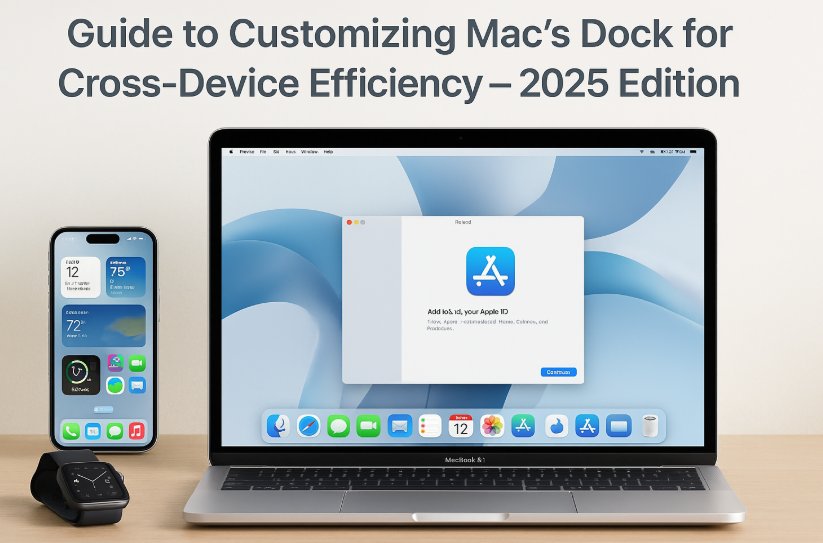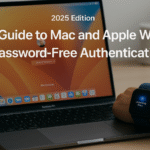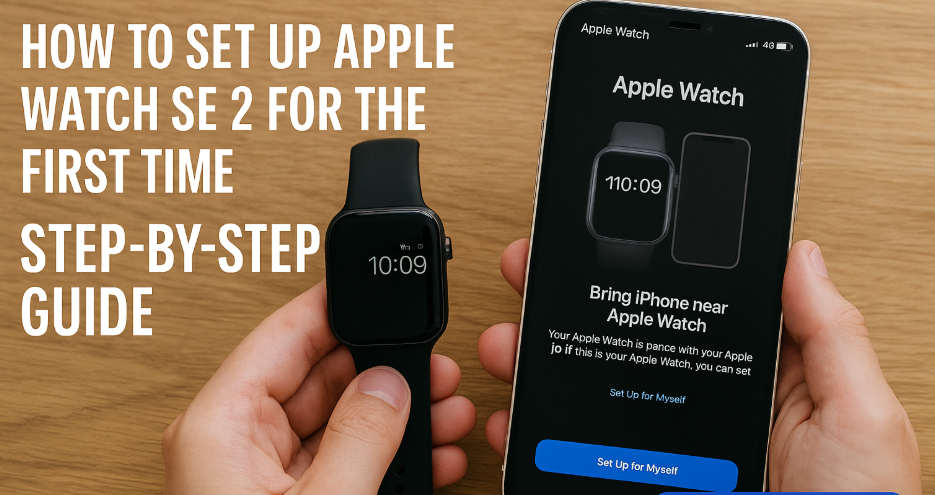The Dock is more than just an app launcher it’s your productivity command center. When customized intentionally, it becomes the bridge between your Mac and other Apple devices like your iPhone, iPad, Apple Watch, or even AirPods.
If you’re invested in the Apple ecosystem, optimizing your Dock for cross-device efficiency isn’t optional it’s essential.
Pillar Content: Apple Watch SE 2nd Gen – Ultimate Review & Guide 2025
Your Apple Watch can trigger automation, unlock your Mac, and even serve as a second screen interface. It’s a perfect Dock companion.
Why Customize the Dock for the Ecosystem?
- Faster Access: Launch Handoff-enabled apps instantly
- Contextual Awareness: Mirror your iPhone’s workflow on your Mac
- Less Clutter, More Focus: Reduce app fatigue by only displaying cross-device essentials
- Visual Efficiency: Organize apps in left-to-right priority
1. Clean Out the Clutter
Right-click and “Remove from Dock” any apps that aren’t frequently used. This is the first step in creating a focused Dock.
2. Add Handoff-Compatible Apps
Apps like:
- Safari
- Calendar
- Notes
- Pages
These support Handoff—so starting a task on your iPhone and picking it up on Mac is instant.
3. Pin Universal Apps
Apps that sync across devices should be visible in your Dock:
- Messages
- FaceTime
- Photos
- Reminders
4. Use Folders for iCloud & Shortcuts

Create a custom folder and drag:
- iCloud Drive
- Shared files
- Shortcuts app for automation
This enables single-click access to synced items.
5. Show Recent Apps (Smart Toggle)
Go to System Settings > Desktop & Dock
- Enable Show Recent Applications in Dock
This feature gives you instant access to the last-used app from iPhone or iPad.
6. Adjust Size, Position, and Magnification
Set preferences based on screen real estate and accessibility:
- Position: Bottom or Left
- Size: Medium with slight magnification
- Hide Automatically: Enabled for minimal distraction
7. Add Screen Time and Battery Widgets
Pin Battery, Screen Time, and Clock to your Dock as folders or shortcut stacks.
Testimonial
“I never realized how powerful the Dock could be until I started using it with my Apple Watch and iPhone. My workflow is now 2x faster. One tap and I’m editing the same note across devices.” — Simulated User Review: Priya M., UX Designer
Expert Insight
“The Dock is a dashboard. When linked with iCloud, Handoff, and Continuity features, it becomes the ultimate gateway for cross-device productivity.” — Expert Perspective: Leo Raymond, Ex-Apple UX Evangelist
Use Case Example
You’re on a call via FaceTime on your iPhone. Your Mac shows an icon in the Dock with Handoff enabled. Click it, and the call seamlessly transfers to your Mac’s speakers.
FAQs
Q: Can I customize different Dock layouts for multiple user profiles?
Yes. Each macOS user profile retains its own Dock configuration.
Q: Is it possible to backup my Dock layout?
You can use third-party tools like Dockutil or defaults commands in Terminal to export/import Dock preferences.
Q: Does the Dock affect performance?
Not significantly. It’s a lightweight UI layer, but minimizing active apps always helps.
Q: Why isn’t my iPhone app showing up in the Dock?
Make sure both devices use the same Apple ID, and Handoff is enabled in settings.
Final Takeaways
- Audit your Dock regularly
- Prioritize cross-device apps
- Leverage iCloud Drive and Shortcuts
- Use minimalism for max efficiency







